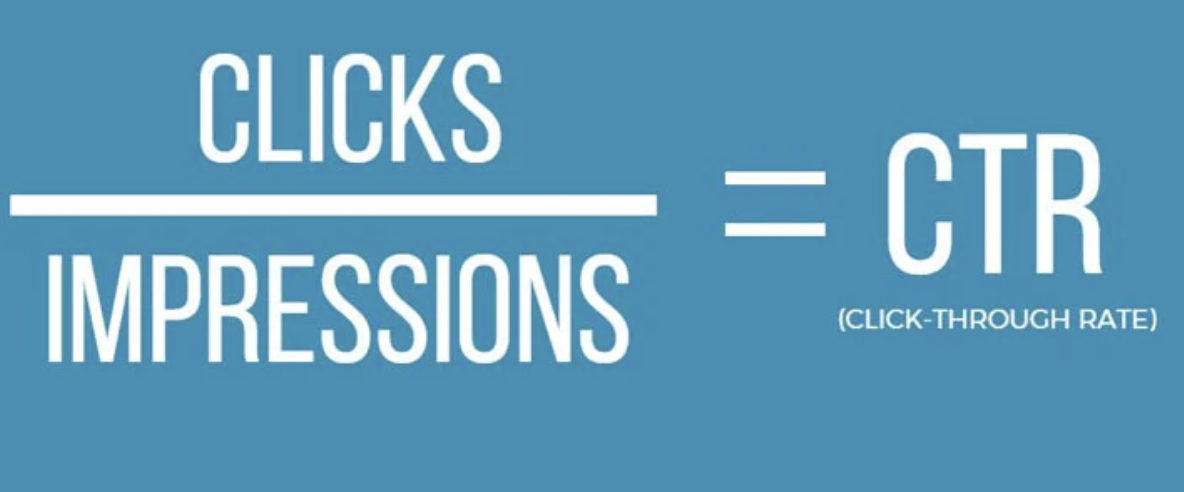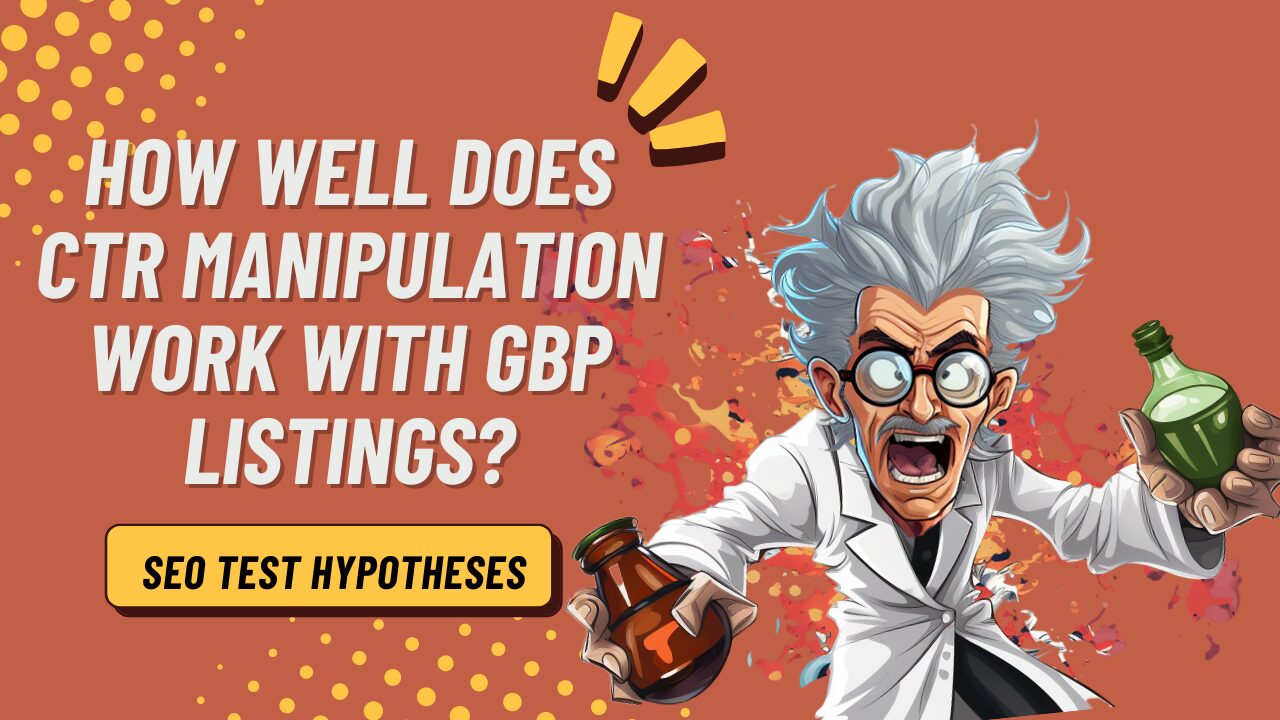Enhancing Organic Click-Through Fees With CTR Adjustment
The optimization of organic click-through rates (CTR) is a nuanced venture that pivots on understanding both user psychology and efficient material presentation. The landscape is swarming with misunderstandings and oversimplifications about what genuinely drives CTR.
Understanding Click-Through Fees
Understanding click-through rates (CTR) is essential for reviewing the efficiency of internet marketing strategies. CTR determines the percentage of customers who click on a details link or ad contrasted to the total number of customers that see it. A higher CTR shows that the content is involving and relevant to the target audience, while a reduced CTR might signify a demand for optimization.
To calculate CTR, split the number of clicks by the number of perceptions and multiply by 100. If an advertisement obtains 300 clicks out of 10,000 perceptions, the CTR would certainly be 3%. This statistics is essential for assessing different components of electronic advertising, consisting of seo (SEO), e-mail campaigns, and social media sites marketing.
In addition, evaluating CTR helps marketers identify which strategies produce the best outcomes and which call for refinement. By focusing on enhancing CTR, services can boost their content's exposure and efficacy, resulting in enhanced traffic and potential conversions. Comprehending the subtleties of CTR is fundamental for any kind of marketing professional aiming to maximize their online presence and take full advantage of roi (ROI)

The Psychology of Individual Habits
Individual habits is significantly affected by emotional factors that determine how individuals engage with on the internet material. Recognizing these variables is essential for enhancing click-through rates (CTR) in organic search engine result. Cognitive prejudices, such as the anchoring result, play an essential duty fit users' assumptions. When users run into details, their first perceptions can greatly affect their succeeding judgments regarding relevance and integrity.
Psychological reactions likewise considerably effect individual habits. Web content that reverberates emotionally can cause a feeling of urgency or curiosity, triggering customers to click. Furthermore, social proof-- such as individual testimonials or ratings-- can improve trust and motivate engagement, as people typically want to the actions of others to educate their very own decisions.
Moreover, the principle of scarcity can drive clicks - LinkDaddy CTR Manipulation. Limited-time offers or special material create a fear of losing out (FOMO), compelling customers to act swiftly. Understanding these emotional vehicle drivers allows online marketers to produce even more compelling web content that reverberates with their target market
Reliable CTR Manipulation Methods
Leveraging emotional insights can significantly improve click-through rates (CTR) with targeted control methods. Among the most efficient approaches is the use of compelling headings that evoke inquisitiveness or urgency. Wording titles as inquiries or integrating numbers can bring in even more attention, motivating customers to click.
Another technique involves maximizing meta descriptions to develop a feeling of relevance and immediacy. By plainly laying out the benefits or remedies offered in the content, you can engage prospective viewers and convince them to click. Additionally, using power words-- such as "unique," "shown," or "complimentary"-- can improve the charm of your content.
Visual components additionally play a critical function. Including captivating pictures or thumbnails can draw individuals in and enhance CTR. A/B testing various visuals can aid identify which images Get More Information reverberate ideal with your audience.
Last but not least, guaranteeing that your content assures deliverable value results in greater CTR. They are extra likely to engage when customers perceive that clicking will certainly offer them with meaningful understandings or solutions. By utilizing these techniques attentively, marketing professionals can properly control CTR to their benefit while keeping honest criteria.
Common Misconceptions Regarding CTR
A number of false impressions border click-through rates (CTR) that can lead marketing professionals to make illinformed choices. One widespread misconception is that a higher CTR constantly equates to better performance. While a high CTR recommends that even more individuals are clicking, it does not assure sales or conversions. Ultimately, the efficiency of website traffic depends upon the high quality of the landing page and the significance of the content.
Another common idea is that CTR is a separated metric. In truth, CTR needs to be assessed combined with various other efficiency indicators, such as bounce price and conversion price, to obtain an alternative view of project success.
In addition, some marketing experts presume that optimizing for CTR alone is sufficient. Focusing solely on CTR can lead to clickbait strategies that might attract clicks yet stop working to involve customers meaningfully. CTR Manipulation. This approach can hurt brand reputation and lead to reduced retention prices
Last but not least, there is a concept that CTR techniques are globally reliable. The reality is that optimum CTR techniques can differ significantly across industries and target market, necessitating tailored approaches for different market sectors. Comprehending these misconceptions is important for developing reliable CTR approaches that straighten with overarching marketing goals.
Gauging CTR Success
Although high click-through rates (CTR) can show successful involvement with material, gauging their real success calls for an extensive analysis of numerous variables. First, it is essential to comprehend the context in which the CTR is attained. For instance, a high CTR on a deceptive title might not convert to meaningful engagement or conversions, inevitably reflecting badly on the brand's integrity.
2nd, reviewing the resource of web traffic is essential. Organic website traffic from internet search engine can symbolize a durable content technique, while clicks from unnecessary resources might indicate an absence of targeting. Furthermore, determining the succeeding individual actions is important; evaluating metrics such as bounce price, time invested in page, and conversion rates can supply much deeper understandings into the high quality of the interaction launched by the CTR.

Verdict

The optimization of natural click-through prices (CTR) is a nuanced undertaking that hinges on comprehending both user psychology and effective material discussion. CTR determines the portion of individuals that click on a certain link or advertisement compared to the overall number of customers that watch it. A higher CTR shows that the material is involving and pertinent to the target audience, while a lower CTR may indicate a requirement for optimization.
Focusing specifically on CTR can lead to clickbait strategies that may bring in clicks but fail to involve customers meaningfully. Furthermore, determining the subsequent customer habits is essential; evaluating metrics such as bounce rate, time invested on page, and conversion rates can offer much deeper insights right into the top quality of the involvement initiated by the CTR.